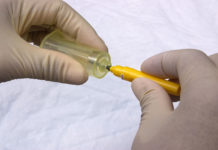
Study finds carcinogenicity of smokeless tobacco varies by region
Manufacturing practices and lack of regulation make smokeless tobacco (SLT) products manufactured in India more likely to cause cancer.
A study by the National Institute of Cancer Prevention and Research (NICPR) has shown that Indian SLT products are more carcinogenic. The study looked at links between smokeless tobacco and oral cancer. Analysing the results of 37 studies, the study concluded: “Oral cancer risk due to SLT use varies according to the type of tobacco used and the geographical regions. Countries in high-risk regions should formulate and implement policies stringently for the cessation of smokeless tobacco in addition to smoking. The case of banning gutkha in most of the Indian provinces/states is one of the best examples of such an application. Greater initiation at regional leadership is needed to advise policymakers for the steps towards SLT products cessation as well, for control of oral cancer.”
It looked at SLT products that are chewed or snuffed orally or nasally, or applied over teeth and gums, or gurgled or drunk. The chewed tobacco products are betel quid with tobacco (Mainpuri and others) and pan masala with zarda and gutkha. Snuffed oral products are either wet or dry. Wet snuff is used in the Western world. Nasal snuff is a dry powder known as nas or naswar.
In south-central Asia, cancer of the oral cavity ranks among the three most common types of cancer. In India, the age standardized incidence rate of oral cancer is 12.6 per 100 000 population.
The study found: “A study (of SLT and oral cancer link) which included the United States, Sweden, and India together found that the risk of oral cancer from SLT use was due to the inclusion of Indian studies, since when analyzed separately excluding India no such risk was found for US and Swedish studies. Most of the studies found no or negligible risks as far as European studies are concerned. Some other studies showed an increased risk for the United States, but not for the European region.” It argued that the reason for low risk estimates from Europe and Americas might be due to difference in frequency and intensity of use and variation in SLT type. Moist snuff used in the Swedish region was least toxic due to improved manufacturing procedure and processing.”
According to the World Health Organisation, incidence rates for oral cancer vary in men from 1 to 10 cases per 100 000 population in many countries. In south-central Asia, cancer of the oral cavity ranks among the three most common types of cancer. In India, the age standardized incidence rate of oral cancer is 12.6 per 100 000 population.
The Global Adult Tobacco Survey 2016-17 estimates that 29.6% of men, 12.8% of women and 21.4% (199.4 million) of all adults in India currently use smokeless tobacco.












